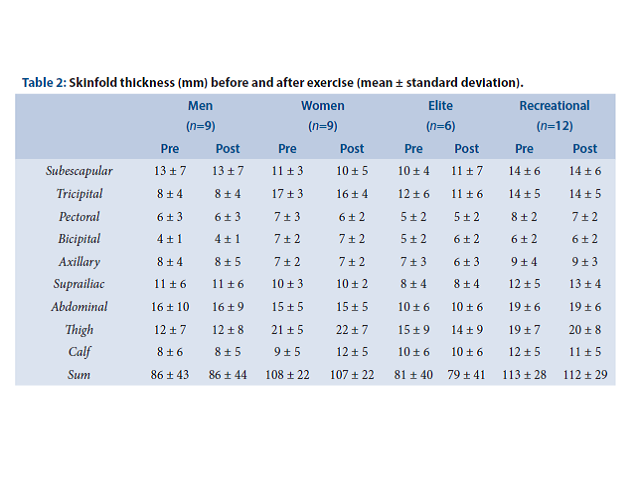A Single 10k Run Session does not Change neither Skinfold Thickness nor Body Circumferences
Abstract
Background and Aim: In everyday practice, the anthropometric assessment including measures of skinfolds and body girths must be performed avoiding previous physical exercise. However, few studies are conducted using situations with ecological validity. Thereby, this study aimed to compare if 10k treadmill run alters skinfold measures and body girths of runners. Methods: Eighteen runners of both sexes and levels (34 ± 6 years old with 8 ± 7 years of run practice and 63.6 ± 8.8 ml*kg-1*min-1 of VO2max) underwent body girths, skinfolds thickness and body weight assessments before and after the 10k run. The anthropometric parameters were compared by Student’s t-Test dependent for paired samples and correlations between body weight reduction and anthropometric parameters were compared by Pearson’s correlation coefficient with α= 5%. Results: The 10k run reduces 1.4% of body weight. However, no significant changes were observed in the sum and neither of skinfold thickness nor body girths. The percentage of body weight reduction also not correlated with the exercise-induced changes in skinfold thickness and body girths. Conclusion: Therefore, although 10k run causes a body weight reduction, the skinfold thickness and body girths were not altered by previously exercise and not correlates with body weight reductions. In this way, the use of these anthropometric assessment techniques can occur both before and after a conventional training session in runners.

Copyright (c) 2020 Phcog.Net

This work is licensed under a Creative Commons Attribution-NonCommercial-NoDerivatives 4.0 International License.





